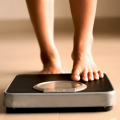The Secrets of Jogging for Weight Loss

How to start running so as not to get injured and not quit this activity as boring and tiring? Let’s find out!
The journey of jogging for weight loss is not something you get quick results from. It is recommended to start with 20 minutes of jogging and increase the time to 40-60 minutes within a month. Don’t think about speed and distance - for those who are losing weight, these numbers are not important. To lose weight, you should jog 3-5 times a week. For the first 2-3 months, switch jogging with walking, for example, run for 2 minutes and walk for 2.
If you have more than 5 extra pounds, definitely switch to walking while jogging! This will help prevent a sharp decline in strength, avoid back or knee injury, not overstress the heart.
How to Jog Safely
To lose weight, it is more convenient to jog with a heart rate monitor. Now there are different options for gadgets: sports watches with a heart rate sensor in the form of a chest strap, fitness bracelets that measure the pulse directly on the wrist.
If you want to lose weight, it is recommended to calculate the pulse using the following formula. Subtract your age from 220 - this is your maximum heart rate. Then multiply the resulting number by 0.6. This should be your average heart rate while jogging. If you use a heart rate monitor or a fitness bracelet, it will automatically calculate the heart rate for weight loss.
You can also focus on the general recommendation of keeping your pulse of 110 to 136 beats per minute. Please note - this is the average heart rate, sometimes it can be slightly higher or lower.
Finally, if you don't have a heart rate monitor, just learn to jog at a conversational pace. This is especially useful if you are a beginner and are not sure that you will jog regularly and therefore are not ready to acquire special gadgets. Conversational pace means that while running you are not out of breath, and at any time you can say a phrase of 5-6 words. If that doesn't work, slow down and start walking more often.
What Time of Day Is Best to Jog for Weight Loss?
There are both morning and evening joggers, even among coaches and doctors. What to choose?
The pros of morning jogging:
- During the night, the body has used up its carbohydrate reserves and is forced to release fat reserves;
- Morning jogging speeds up the metabolism for the whole day, which helps to lose weight even at rest;
- In the morning you are not tired yet and do not risk missing a jog due to unexpected things.
The pros of evening jogging:
- If you jog in the morning on an empty stomach, there is a risk of hypoglycemia (a sharp drop in blood sugar) and a hungry faint;
- In the morning, the blood thickens after the night and it is difficult for the heart to pump it in an enhanced mode while running.
- However, exercising vigorously before bed can lead to insomnia.
Most people do it when they have time and energy. For example, some crawl like sleepy flies in the morning and are unable to be active till noon. Well, the one who arrives at the office by 11 o'clock still prefers morning jogging.
Jogging Tips for Beginners
If you jog in the morning, then 15-30 minutes before running eat something light and drink water. This will prevent those negative aspects that we talked about above - a hungry faint and a stress for the heart due to thick blood. The product should be instantly absorbed. Choose a carbohydrate sports drink, banana and water, sweet tea or coffee.
Wear loose-fitting clothing and be sure to wear proper footwear. Specialized jogging shoes are what will protect your knees, hips and back from the negative effects of jogging.
Beginners should not jog on asphalt. Grass, a dirt track, a rubber surface on a stadium, soil - that's what you need. If there are no options other than asphalt, be sure to buy jogging shoes with a high degree of cushioning. Otherwise, when you land, all of your six-fold weight will fall on your knees and spine.
Other articles and publications:
Articles and publications of other companies:
- +1 (646) 270-9836
- Long Island City
- grantny.com












